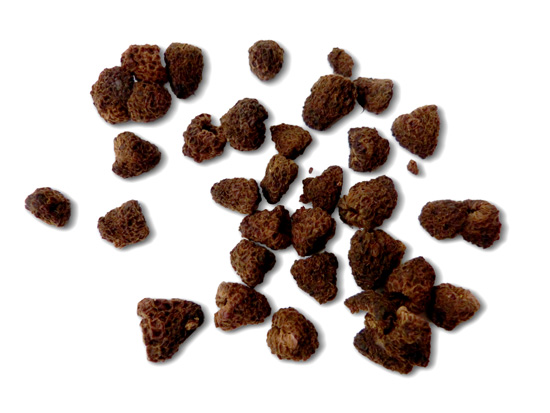Freeze-dried Raspberries
Rubus idaeus L.
Donated by Kirk Gustafson
2003
Weight: 2 g

This assembly of raspberries has survived a series of travels that ultimately led them to their current desiccated state as specimens in the Dehydrated Food Museum. The donor s former roommate Eric initially put the raspberries in the freezer. Moving twice in two years, the donor moved the frozen raspberries with him. Finally upon inspecting them, he discovered that the moisture had escaped from the berries, and they were surrounded by ice crystals. They had accidentally freeze-dried.
A freezer is a dry place. Raspberries are hygroscopic in nature, that is, they contain water. The moisture in the frozen raspberries was slowly drawn out by the process of sublimation. Fluctuations in the temperature (including during the aforementioned moves) caused the moisture in the berries to sublime—to change from ice into water vapor (a gaseous state) without first becoming a liquid. As the water vapor met the cold surface of the package, it formed into ice through a reverse sublimation process.
The principle of equilibrium also likely came into play. The interior of the bag of frozen raspberries was a closed system. The water vapor within the berries and the air surrounding the berries in the package tended towards a uniformity of moisture. As the water vapor migrated out of the fruit into the drier air and came in contact with cold surfaces such as those of the existing ice crystals, it froze, again lowering the moisture content in the air and again upsetting the equilibrium, causing the process to repeat until the raspberries became lightweight and largely devoid of moisture. NEXT >